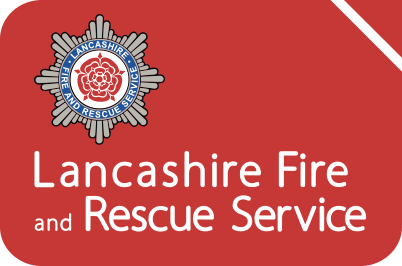Lancashire Combined Fire Authority Public Consultation Strategy
Background
The Lancashire Combined Fire Authority’s consultation strategy has been in place since the integrated risk management planning arrangements were introduced in 2003.
The strategy is reviewed annually by the Planning Committee to ensure that it continues to meet statutory requirements; incorporates good practice; and provides the public and stakeholders with timely opportunity to influence development of their fire and rescue service.
Scope
This strategy sets out the Authority’s arrangements for public consultation which are delivered on its behalf by Lancashire Fire and Rescue Service. The Authority acknowledges the significant contribution of fire and rescue service staff in terms of service delivery and encourages the active participation of employees in consultation exercises. Arrangements to consult staff are not included in this strategy as they feature within internal documentation.
Definitions
Engagement is an ongoing process of establishing and maintaining links with stakeholders. It is not in itself consultation, although consultation uses these links to reach people or individuals to take part in a specific consultation. It is a term given to a range of techniques that give stakeholders opportunities to influence how organisations work and the services that are delivered.
Consultation is one of these techniques and is a process through which the views of relevant stakeholders are sought about a particular issue, proposal or options over a defined period of time, to which due consideration is given by the Authority in reaching a decision.
Other engagement techniques include:
Informing – telling people what is going on, what decisions have been made and what action will be taken but views are not actively sought.
Involving – asking people for views to help shape the development or implementation of options, plans and activity on an ongoing basis or at the start of a policy development.
Collaborating – involving people in working together to develop solutions or proposals.
Negotiating – discussion with people to seek a jointly owned outcome where differences are addressed.
Empowering – giving people the power to control decisions and services within available resources in a specific area.
A public consultation led by the Authority may also involve some of these techniques as part of the consultation plan. Particularly, it will seek to involve people throughout work undertaken to develop options for change and will inform them about actions that will be taken which will not be subject of a consultation exercise.
Public consultation approach
Lancashire Fire and Rescue Service will undertake public consultation on a range of issues on behalf of the Authority to ensure that the views of communities, partners, individuals who have characteristics that are protected in the Equality Act and stakeholders are used to inform decision making.
Subjects of public consultation
The extent of the consultation will be proportionate to the nature and extent of any proposals being considered. It may include consultation on:
In some cases, a formal consultation exercise may not be necessary. For example:
Where it is necessary to implement a legal judgement or Government instruction.
Where stakeholders have influenced proposals by early involvement in the consideration of options and planning of proposals.
Where minor adjustments are being advocated.
Where issues can be resolved without formal consultation.
Where the Authority has already reached consensus and consultation results are unlikely to influence a decision.
Where there are no genuine options except for that which is proposed.
Where the Authority has already taken a decision through its usual democratic process.
In these instances, the Authority will communicate information to stakeholders to inform them and raise awareness of the changes that have been made or the decisions that have been taken.
Planning public consultation
The annual service plan, published in April, outlines the planned priorities to be delivered in the year that might require public consultation. These consultations may not take place immediately following publication of the plan but at the time that is most relevant to the planned priority. At this point the Authority’s Planning Committee will be provided with details about the issue and options being considered and permission to consult with the public sought.
Due to the pace of change, issues may arise during the year that require public consultation, but which have not been considered within the annual service plan. In these cases, permission to consult with the public will be sought from the Planning Committee chair and chair of the Authority as urgent business, if the meeting schedule does not permit discussion at a meeting.
Lancashire Fire and Rescue Service will maintain a calendar to ensure that consultation exercises do not clash and to avoid public consultation overload or fatigue.
Timings
There must be sufficient opportunity for consultees to participate in a consultation. It is commonplace to use a standard 12-week period for public consultation (not including major public holidays or summer months when people are away) however the length of time given for consultees to respond can vary depending on the subject and extent of impact of the consultation. A minimum of four weeks should be given for small scale consultations. In setting timings, consideration will be given to:
The scale of the issue or proposals.
The size of the audience we need to consult with.
The need to work with voluntary groups who require time to extend the consultation through their memberships.
The time of year and any impact on the availability of target groups.
The urgency with which a decision needs to be taken
Allowing a realistic time to enable the formulation of a considered response.
All information provided about the consultation will provide details of the deadline for responses.
Targeting public consultation
Before undertaking any consultation exercise, identification and mapping of stakeholders will be undertaken to understand which audiences (stakeholders) are most likely to be impacted by any resulting proposals. An equality impact assessment of the proposals on groups likely to be particularly affected will also be carried out.
A plan will then be prepared which sets out which stakeholders with legitimate interest in the proposals it will attempt to consult with them to give them opportunity to express their views.
Where appropriate, this will include:
The public in Lancashire – particularly those that are likely to be directly affected by the proposal or issue.
Community organisations, including specific community groups, particularly those that represent the interests of people with legally protected characteristics. Protected characteristics that are legally protected include, but are not necessarily limited to: age, disability, gender reassignment, marriage or civil partnership (including the right not to be married or in a civil partnership,) pregnancy and maternity, race, religion or belief, sex and sexual orientation.
Public representatives, such as Members of Parliament and local councillors.
Businesses or business organisations.
Local authorities, public agencies and other emergency services.
Third sector organisations including voluntary groups and charities.
Relevant government departments.
Representative bodies.
Information about a public consultation
The focus of consultation will be on meaningful engagement, through relevant methods, with staff, the public, stakeholders and any other requesting body or individual, during which the following information will be provided on the Service website:
Details of the issue and/or proposal.
Why the issue has arisen and/or what is being proposed.
How the proposals are likely to impact on the provision of service.
Background statistics and assessments.
The anticipated timescales for decision/implementation.
However, it is recognised that while this information is a useful reference, it is not in itself enough to secure consultee response. For all but the shortest written document, a concise summary will be provided for each consultation detailing the issue and options and setting out opportunities to contribute. This should be written or produced graphically using simple and engaging language in an accessible format. Information will be localised to ensure that people understand how plans may affect their local area. Assistance in providing information in alternative formats will be offered.
Information will be distributed using methods that are most appropriate to target relevant stakeholders, internally and externally. The Service’s communications strategy sets out communication channels that should be considered including a range of options. For example, consultation about the community risk management plan could be communicated using news stories in the media, digital channels including the Service’s social media platforms and website, and public engagement events.
Consultation methodology
No single activity or mix of activity through which to consult will be right every time. Our approach is to create a dedicated consultation plan to address the specific objectives with a mix of activities designed to seek the views of the identified stakeholders. This may involve a mix of:
Surveys
Engagement events
Focus groups
Consultation through the Service’s employee voice groups
Feedback given at open public meetings
Attendance at local authority meetings or scrutiny committees
Debate and feedback given through social media
Written submissions
Public scrutiny panel
Deliberative forum
Where it is feasible, participation in the consultation and responses received will be acknowledged and an audit trail kept of responses. Explanations, where requested and appropriate, will be given to respondents who ask why individual proposals have been rejected.
A mid-point review should be conducted as close as possible to the mid-point of the open consultation. It is an opportunity for a formal review of progress achieved and provides an opportunity for any adjustments to be made to the consultation plan as required.
Data use and subjects and transparency obligations
The Combined Fire Authority is under a duty to and will be compliant with the provisions of the Data Protection Act 2018, which is the UK’s implementation of the General Data protection Regulations (GDPR), as well as the re-use of Public Sector Information Regulations 2015, which came into force on 18 July 2015, subject to relevant exceptions.
The GDPR prohibits the processing of personal data unless there is a lawful basis for it such as doing so being in the public interest. The Combined Fire Authority will therefore need to process such data in relation to the legal obligations conferred upon it in the exercise of its public functions or in relation to any activity that supports or promotes democratic engagement.
The Authority will ensure that all relevant information provided by data controllers to data subjects and all communications with data subjects will be concise, transparent, intelligible and easily accessible, in clear plain language. This applies to but is not limited to situations when the Authority collates special categories of personal data where more stringent compliance burdens are placed on organisations which process personal data relating to matters such as:
The decision-making process
At the end of the consultation period a closing review will be undertaken to determine if sufficient response has been obtained to close a public consultation as scheduled, or whether an extension or specific additional activities are required to be undertaken to ensure that sufficient views have been obtained from potentially impacted groups.
A report on the consultation exercise will be presented to the Authority, or a relevant committee of the Authority, which will include a summary of statistical results and feedback and views offered. This will include an updated equality impact assessment.
Consultation rarely concludes in a single opinion and elected members will make their own judgements about the weight to be given to different views alongside other factors such as financial cost, environmental impact and professional experience and advice. However, all consultation responses will be available to the Authority, or a relevant committee of the Authority, before associated democratic decisions are taken.
Feedback and evaluation
Decisions made about proposals that have been the subject of public consultation will be conveyed via the Service’s communications channels. More detailed feedback will be made available to consultation participants directly or through the Service’s website, depending on the extent of their involvement with the consultation.
Specific and individual requests for feedback will be accepted but any decision to respond individually will be balanced against the general feedback already provided and the nature and reason for any specific request for an individual response.
Consultation exercises will be evaluated to assess the effectiveness of the processes adopted.
Reviewed: January 2025




